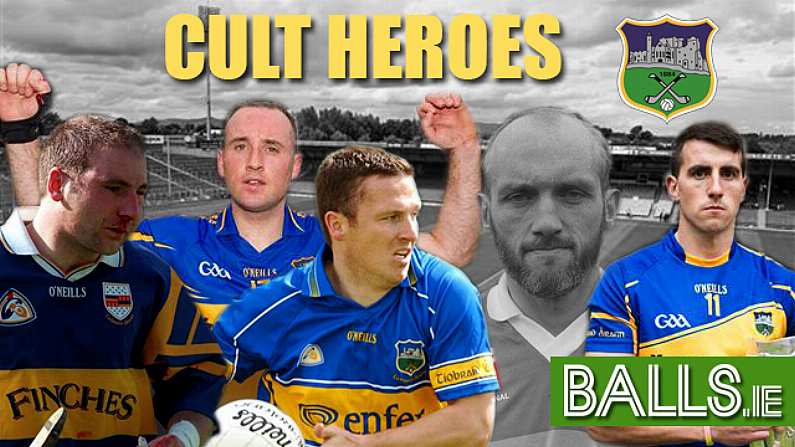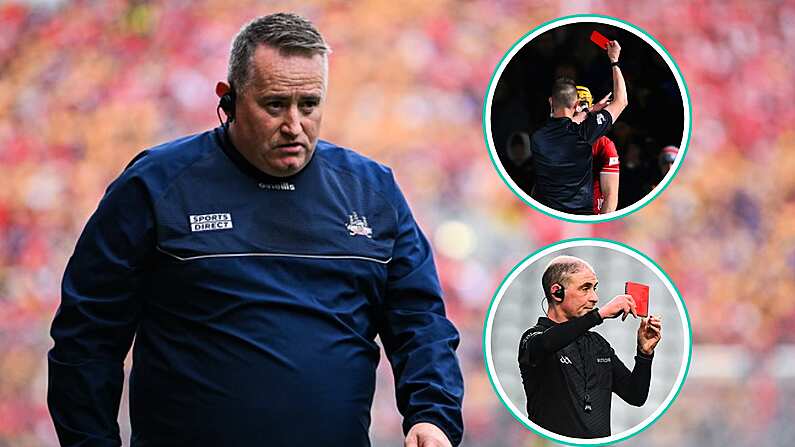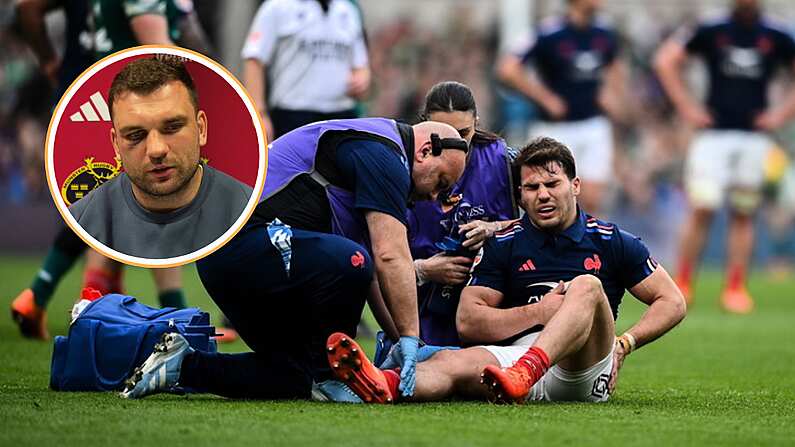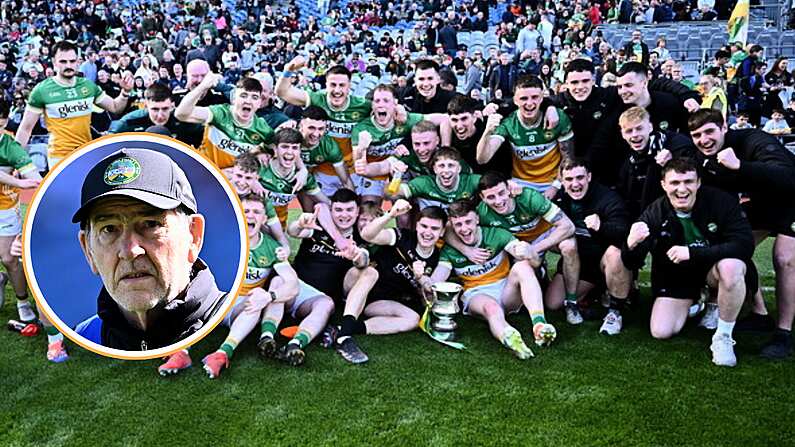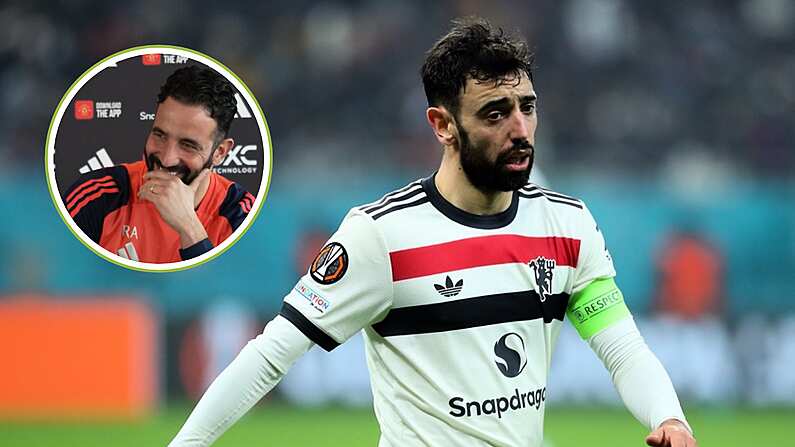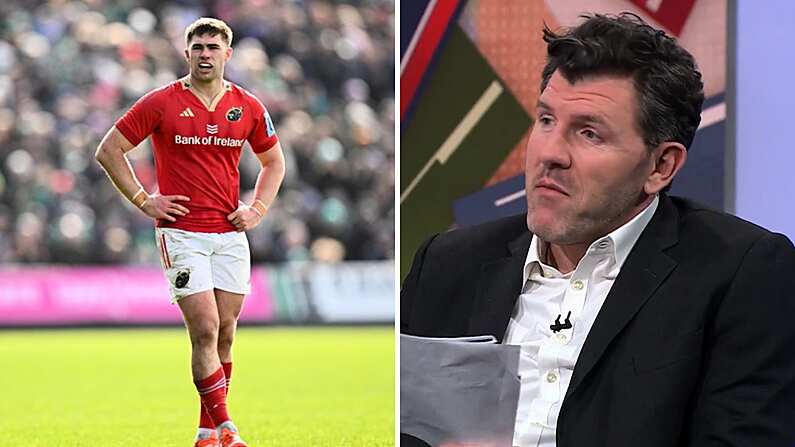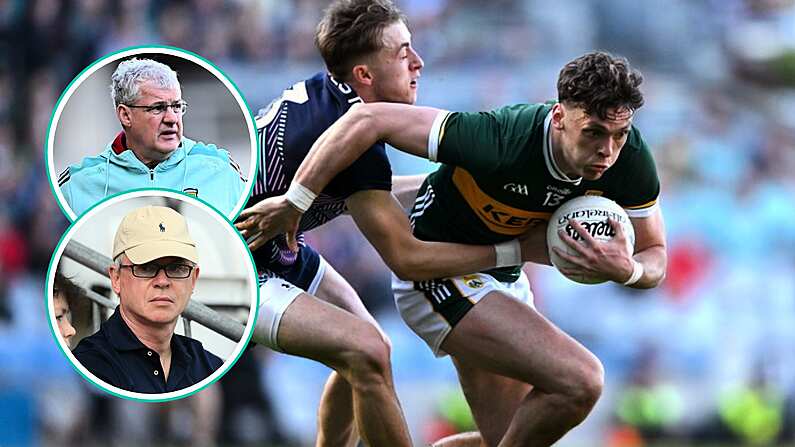Our search for the ultimate cult hero in every county takes us to Tipperary this week, which has recently been re-designated as a dual county. Sure enough, there's a mix of hurlers and footballers on here, even if it is somewhat weighted towards the former.
The mission statement of the cult hero series can be viewed here and we would encourage you to do so. Before we go any further, we must congratulate John Doyle in his victory in the inaugural Kildare-focused poll of last week.
With the help of local experts, we have drawn up a shortlist of five. These five men, we believe, are the finest Tipp has to offer in terms of cult-heroness.
Readers can pick the greatest Tipperary cult hero of the lot from the shortlist below. Vote early and vote often. Please share your own personal narratives attesting to the cult hero-ness of your chosen candidate to thegaffer@balls.ie. We'll be posting these over the week to influence the voting.
And now... to the shortlist!
Cormac Bonnar
When Tipperary finally returned to the top table of hurling during the Charlton years, it was their star corner forwards Nicky English and Pat Fox who hogged all the headlines and the Player of the Year awards.
Elsewhere, Michael Cleary amassed big scores largely thanks to his free taking duties. John Leahy was famed for his skill and his habit of getting drawn into battles with opposing defenders (usually from Galway). Declan Ryan was a striking figure on the 40 and was usually good for chipping in a few from play along with the odd goal.
However, on the edge of the square during those years was Tipp's answer to Lynskey, Cormac 'the Viking' Bonnar.
Looking vaguely like former Sheffield United striker Alan Cork in his balding and bearded dotage, Bonnar was a ball-winner in the full-forward line who specialised in making life hellish for the full-back and creating chances for the nippy forwards on either side of him.
In fact, forget about Alan Cork, Bonnar's true lookalike was the Irish saxophone player Paddy Cole.
His career at inter-county level was relatively short, having only broken into the side at the age of 29. He mined a fair amount of silverware from that five years, winning All-Ireland titles in 1989 and 1991, and retiring after the loss to Cork in the 1992 Munster championship.
As if to prove his importance, he was dropped for the Munster championship clash against an unfancied Cork in 1990. The donkeys won that particular derby and Bonnar was soon back in the side.
Tipp FM's Sport Editor Shane Heffernan says...
"Either side of him you had fantastic hurlers in Pat Fox or Nicky English. He wasn't in the same class, skillwise, as either of those guys. But yet he was an integral part of that team. He was a battering ram in some ways. He was a guy that would hold up ball. He would get others into play.
His appearance was one of the reasons why you might regard him as being a cult hero. When he took the helmet off, here was a guy with a bald head. He wasn't someone you imagined as being part of a Tipp team that was at that point on the brink of coming back to being one of the really top counties. But in many ways, he was at the centre of that.
Jackie Cahill tells us...
"He was known as the viking. It was just the way he looked. He was part of that three man full forward line alongside Nicky English and Pat Fox. Just the way he used to bare his teeth and you could see his teeth underneath the helmet.
He was also a very underrated hurler. He was a really great man to break ball for the lads outside him and Fox and English profited outside him."
John Leahy
According to Donal O'Grady, John Leahy once threatened to burn Brendan Lynskey's house "right down to the axle."
When pondering the difference between sledging in his day and sledging nowadays, Pete Finnerty observed that "no one ever told John Leahy I didn't have a sister!"
Like Alex Ferguson's first great Manchester United team, Leahy was simultaneously a flair player and a tenacious enforcer, two qualities rarely combined in the same player.
Leahy was revered as a terrifically skillful and stylish wing forward. Here was a man who could light up a game. Witness his glorious point in the 2000 All-Ireland quarter-final against Galway, his last full year of senior inter-county hurling.
He was also famous for his abrasiveness and his talent for getting under the skin of his markers. Whether it was Galway in the late 80s or Clare in the late 90s, Leahy became a bete noire among supporters of the counties with whom he tussled.
As often happens, hatred often produces an opposite and equal reaction of love and loyalty. Thus did Leahy a hero among the Tipperary support.
In response to Frank Hogan's exhortation to consult the gospel of John and recall that "Jesus died for the sins of man", Tipp fans started displaying the sign 'Leahy 3:7' at games.
Leahy holds the unusual distinction of winning an All-Star in a year when he didn't play a single minute of championship hurling.
He brought his 'A' game to the 1993-94 League Final against Galway in the Gaelic Grounds, hitting seven points as Tipp gained some measure of revenge for the loss in the previous year's All-Ireland semi-final. It was purely on the strength of that he was bestowed with an All-Star later that year.
A month or so later, Tipperary were dumped out of the championship by Clare, the same team they'd hockeyed in the Munster final less than 12 months before. Leahy was out injured.
Jackie Cahill remembers some of Leahy's scraps with the Galway half-back line of the late 80s.
"I can remember the rivalries he would have had with some of the Galway players in the late 80s and early 90s era. He was an abrasive, in your face type of player. The type of player you wouldn't want to be playing against in the physcial stakes or with some of the verbals that would be going on with him and his markers. He crossed the line a couple of times but Tipperary fans loved him all the more for that."
Tipp FM's Shane Heffernan says that Leahy's "naughty side" appealed to supporters.
"We all knew he had great ability. But in almost every match, he'd do something really daring or he'd make a contribution that would lift people. It wasn't that he just a pristine hurler with amazing skills, even though he was that in lots of ways. It was the fact that he was always likely to get in the face in the opposing defenders and unsettle them. But there was a devil may care attitude to him. And that's what attracted a lot of Tipperary fans to him. He had the skills quite clearly but he had that little bit of extra devil as well."
Patrick 'Bonner' Maher
Phoenix magazine refer to current MEP/election junkie Luke 'Ming' Flanagan as Ming 'Luke' Flanagan and we were sorely tempted to place Bonner Maher's Christian name Patrick in inverted commas.
In the past decade, Tipp have boasted a proliferation with what Tim Gullickson might have called white collar forwards. But one of the real crowd favourites is a forward not afraid to put his blue collar on.
When Bonner Maher won a ball in the air, weaved his way into space and shot over the final point of the 2016 All-Ireland final, an entire row of Tipperary fists in the Hogan Stand shot into the air in unison in the spot below where Balls was sitting.
Synchronised air punching became a sport in the closing stages of that game. Tipperary in full cry late in games is one of the loveliest sights in hurling and that Bonner Maher point gave the 2016 finale the air of the perfect ending.
Within days, he was given word that he was bound for Syria with the Irish army. He's due to be back in time for the 2017 campaign where he'll be chasing a third All-Ireland medal.
Jackie Cahill observes that Bonner would put his head in where other wouldn't put their hurls...
What can you say about Bonner Maher? Just phenomenal workrate. Hooking and blocking. In the last few seconds of the All-Ireland final this year, he was over in the corner of the field trying to stop a Kilkenny player getting out. And Tipp were eight or nine points ahead at that stage. Never stops from first minute to last.
(He's learned quickly from previous mistakes...)
There was a game against Wexford in 2010 when Tipp were trying to get back up on the horse after losing to Cork in the Munster championship. And Bonner went through at one stage and he took the wrong option. He had Eoin Kelly running on one side of him and Lar Corbett on the other side of him. And the two lads absolutely lifted him out of it. But at half time, they sat down beside him and explained why. He took the wrong option but it was just a little learning curve for him.
But such an unselfish player through the years and just a terrific player. He was arguably their most consistent player in the championship in 2016. He's the heartbeat of that forward line.
In the last couple of years, he's added a scoring touch. He'd put his head in where other lads wouldn't put their hurl. It's as simple as that. He's a force of nature.
Eoin Kelly
As Jackie Cahill points out to us, Eoin Kelly's nickname among the suggests that the man is well got on the Killinan End.
He is dubbed the 'Son of God'.
He suffered with Tipperary through the lean years between Nicky English's departure and Liam Sheedy's arrival. And he was still leading the way when Tipperary were ressurected by the end of the decade.
Along with Brendan Cummins and Lar Corbett, Kelly bridged the gap between the 2001 and 2010 All-Ireland triunphs.
In the often trying intervening period, he was relied upon to shoulder the scoring burden. As Lar Corbett has himself pointed out, this was the era when 'one-point Larry' was still togging out. By the time Liam Sheedy arrived, Lar stepped it up considerably.
Jackie Cahill says...
He was nicknamed the Son of God on the terraces by Tipperary fans. Through the barren years of the 2000s, he was more or less a constant. You were going to Tipperary matches, not expecting them to win the whole time but you could nearly always guarantee you'd get a performance out of Eoin Kelly. He was captain in 2010 when they won the All-Ireland. Unfortunately, he recently suffered a cruciate ligament injury playing for his club so we might have seen the last of him."
Declan Browne
Not so much a marquee forward as the entire festival, Browne was the only nationally recognised Tipperary footballer for almost the whole of his career.
And he became a byword for a gifted player from an unsuccessful county.
Many's the humble superstar whose career was destined to be played out far from the shadows of Croke Park that was described as "the Declan Browne of [insert county here]"
It was in the 1998 championship that he shot to prominence, winning an All-Star off the back of his displays against Limerick, Waterford and Kerry. Another followed in 2003 after a rather more indifferent summer for the Tipperary supporters.
As Jackie Cahill notes, back in Browne's pomp, the standard tactic in Tipperary football was farily straightforward...
"He was a very decent hurler at the time when he was in his pomp with the footballers. He would have played the two but football was always his first love. When I wrote Brendan Cummins book the year before last, Brendan said the tactic at the time in Tipp football was "get the ball into Declan and let him do the rest."
But one of my favourite moments of all with Declan was seeing him up on the Hogan Stand in 2005 when Tipp won the Tommy Murphy Cup. For him to lift a trophy at Croke Park for Tipperary football was just brilliant. Great day.
Shame Heffernan says of Browne...
He wasn't the abrasive figure that John Leahy might have been. But there was something incredibly... cool about him. The fact that he didn't seem fazed by big occasions. And maybe that had been one of the difficulties for Tipp footballers or any of the players from the so-called weaker counties.
He almost seemed not to be a Tipperary footballer if I can put it like that. He wouldn't have looked out of place in the great sides that were active in other counties when he was playing.

